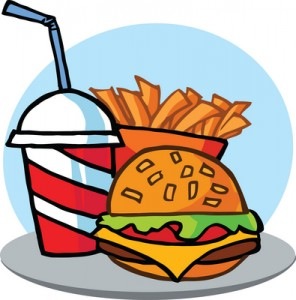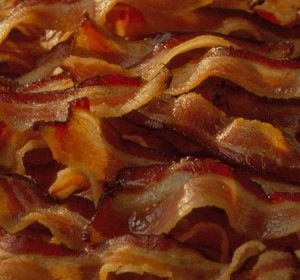 After sugar sweetened beverages, fast food is the most unhealthy food product marketed to children. Fast food companies speak to children early, often, and when parents aren’t looking. Fast food is aggressively marketed toward children as young as two.
After sugar sweetened beverages, fast food is the most unhealthy food product marketed to children. Fast food companies speak to children early, often, and when parents aren’t looking. Fast food is aggressively marketed toward children as young as two.
In 2009 the fast food industry spent more than $4.2 billion on TV advertising and other media. Preschoolers saw 21% more fast food ads on TV then in 2003; children saw 34% more; and teenagers 39% more.
According to Yale’s Rudd Center for Food Policy & Obesity, a comprehensive study looked at the marketing of the twelve largest fast food chains and at the calories, fat, sugar, and sodium in over 3,000 kids’ meal combinations and 2,781 menu items.
What The Study Found
- 13-17 year olds buy 800-1,100 calories in an average fast food meal – about half of their recommended total daily calories.
- At least 30% of the calories in menu items purchased by children and teenagers are from sugar and saturated fat.
- A single meal contains at least half of the daily recommended sodium for young people in most fast food restaurants.
- Although most fast food restaurants kids’ meals have at least one healthy side and beverage option, they are rarely offered as the default.
- McDonald’s and Burger King show only healthy sides and beverages in child-targeted advertising but automatically serve french fries with kids’ meals at least 86% of the time and soft drinks at least 55% of the time.
- Faced with pressure about portion sizes companies rename, not eliminate, their largest sides and drinks. For example, Burger King’s 42-ounce “King” drink is now the “large” option; the previous 32-ounce “large” is now a “medium”; the “medium” 21-ounce drink is now a “small”; and the 16-ounce “small” is now the “value” choice.
- Kid’s food choices are affected by exposure to food and beverage ads targeted to adults. More than 60% of fast food ads seen by children are not for kids’ meals and older children (6-11) are more likely to order something from the dollar menu or a combo meal (27%) than to order a kids’ meal (21%).
- Snacks and dessert choices had as many as 1,500 calories — five times more than the ADA’s recommended 200 to 300 calorie snack for active teens.
- During non-meal times in the evening and after school, teens ordered more fast food than any other age group.
- Of 3,039 possible kids’ meal combinations only twelve met preschool nutrition criteria; 15 met nutrition criteria for older kids and only 17% of regular menu items qualified as healthy choices.



